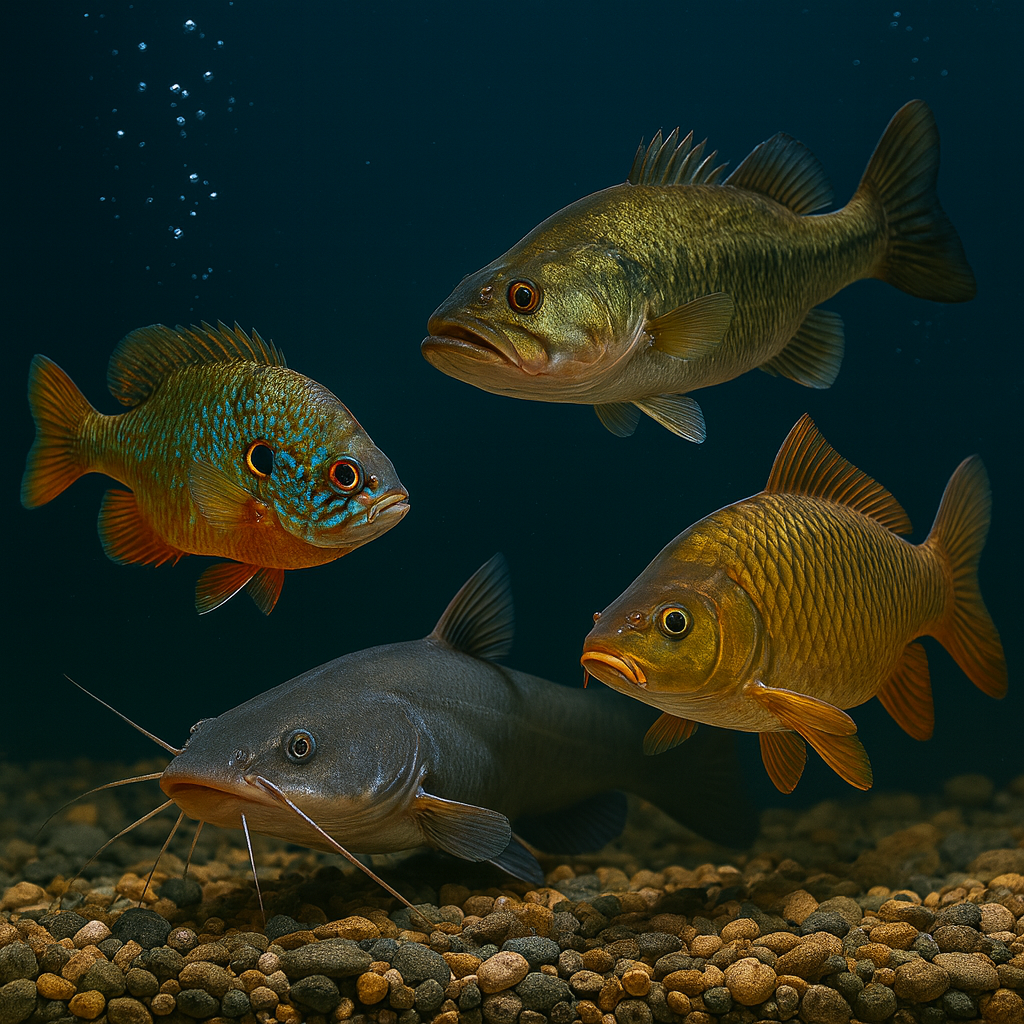Creating a Native Aquarium
🐠 Creating a Native Aquarium
Fishkeeping doesn’t always have to mean expensive heaters, exotic imports, and tropical setups. A native aquarium is a fun, affordable, and educational way to enjoy fish from your own region. It celebrates local biodiversity, often requires less equipment, and lets you bring a slice of your nearby creek, pond, or river into your home.
1. 🔍 Research Local Species
- ✅ Check what fish and aquatic plants are native to your area.
- ✅ Look up legal restrictions — some species may be protected or illegal to collect.
- 📌 Examples:
- North America: sunfish, darters, killifish, minnows, crayfish.
- Europe: sticklebacks, gudgeon, loach, perch.
- Asia: ricefish, loaches, barbs (region-dependent).
2. 🏞 Habitat Setup
- 🪨 Replicate a local stream, river, or pond environment.
- 🌱 Use native aquatic plants (or hardy substitutes).
- 🪵 Decor: driftwood, stones, sand, and gravel collected responsibly.
- 🌊 Provide flow if needed — darters and shiners thrive with current.
3. 💧 Water Parameters
- 🌡 Temperature: Often unheated (room temp works for many natives).
- ⚖️ pH/hardness: Match your local waterways.
- 🔄 Filtration: Choose a filter that simulates natural water flow.
4. 🐟 Stocking Your Tank
- 🎣 Budget-friendly tip:
- If you want an aquarium but don’t have the budget for tropical fish — and you know how to fish or use a seine — head to your local creek, pond, or lake and catch your own aquarium fish.
- Common finds: minnows, darters, sunfish, crayfish, small catfish.
- 🛒 Specialty breeders may also sell native fish.
- ⚖️ Stock lightly — wild fish often produce more waste than tropical species.
- Mussels — 🛑 it is illegal to collect mussels from creeks, as most are stocked to help filter water and protect ecosystems.
5. 🍽 Feeding
- 🐛 Many natives prefer live/frozen foods (worms, insects, brine shrimp).
- 🥬 Some adapt to pellets/flakes with time.
- ⚠️ Avoid feeding wild-caught food directly (parasite risk).
6. ⚖️ Ethical Considerations
- 🛑 Never release aquarium fish back into the wild.
- 🐟 Only collect what you can care for responsibly.
- 📜 Follow local regulations (licenses, catch limits, species rules).
- 🌱 Use this as a way to learn about and support conservation.
7. 🌟 Benefits of a Native Aquarium
- 💸 Affordable — no heaters, no imported fish needed.
- 🏡 Unique — you’ll keep species few aquarists ever see.
- 📚 Educational — learn about local ecosystems.
- 🌍 Eco-friendly — reduces demand for wild-caught tropicals.
⚠️ Pro Tip: Start simple — hardy minnows, shiners, or darters are perfect for beginners before moving to more sensitive natives.
💸 Budget Tip: Collect Your Own Native Fish (Where Legal)
If you want an aquarium but don’t have the budget for tropical fish — and you know how to fish or use a seine — consider a native setup: visit your local creek, pond, or lake and (where legal) collect a few small fish for your aquarium.
- 🪪 Check the law first: Get the required fishing/collecting license; follow gear rules (seines/minnow traps), seasons, size/bag limits, and species protections.
- 🚫 Never release aquarium fish/plants back to the wild. If you can’t keep them, rehome—don’t dump.
- 🧭 Ask permission on private land; respect no-trespassing signs.
- 🧰 Bring the right kit: Fine-mesh dip net or legal seine, minnow trap (if allowed), buckets/cooler, battery air pump, dechlorinated water for transport.
- 🌡️ Handle gently: Keep buckets cool and aerated; avoid overcrowding; get fish home quickly.
- 🧼 Biosecurity: Clean/Drain/Dry gear between waters to prevent spreading invasives or pathogens.
- 🩺 Quarantine 2–4 weeks before adding to display; observe for parasites and disease.
- 🐟 Start with hardy, abundant species (shiners, minnows, darters) and avoid large predators that outgrow the tank.
- 🌿 Plants & inverts: Collect only where legal; avoid prohibited/invasive species; rinse well and quarantine.

Powered by Lightspeed
Display prices in:USD